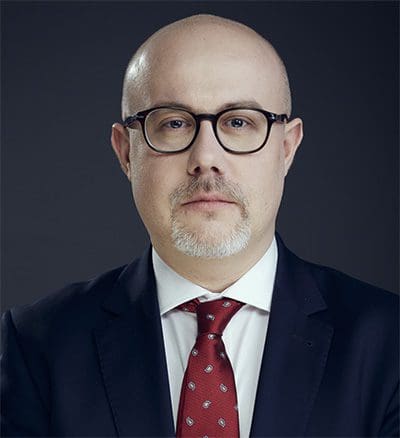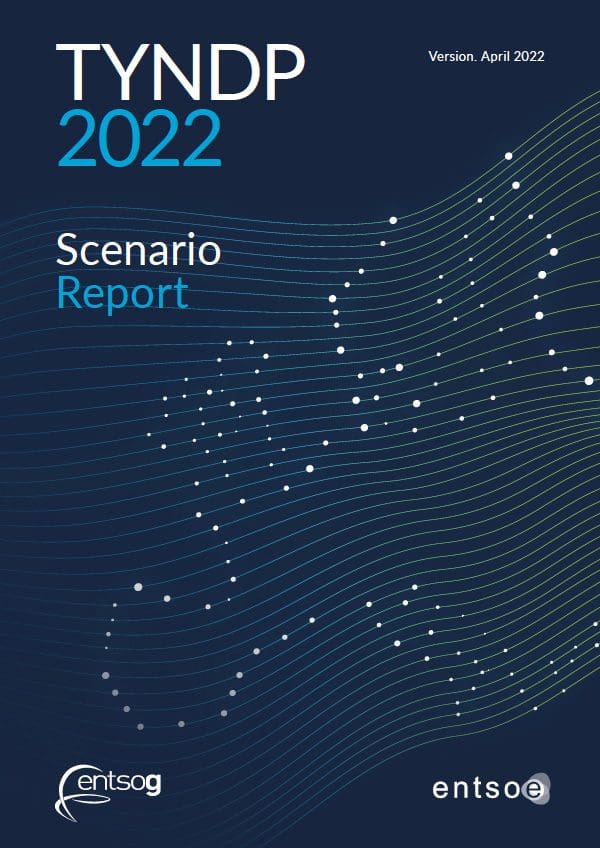We are happy to present to you the updated gas and electricity joint Scenario Report, the third report of its kind. It results from the close collaboration of ENTSOG and ENTSO-E to develop scenarios for the whole energy system and the public consultation held last autumn on the Draft Scenario Report published on 7 October 2021. Scenario work is the first important step to capture the interactions between the gas and electricity systems and is therefore paramount to delivering the best assessment of the infrastructure from an integrated system perspective. The joint work also provides a basis to allow assessment for the European Commission’s Projects of Common Interest (PCI) list for energy, as ENTSOG and ENTSO-E progress to develop their Ten-Year Network Development Plans (TYNDPs).

Piotr Kuś
General Director ENTSOG

Sonya Twohig
Secretary-General ENTSO-E
The outcomes of the work presented illustrate the unique position of the gas and electricity TSOs to provide quantitative and qualitative output, while also building upon the synergies and interlinkages between the two sectors: in total almost 80 TSOs, covering more than 35 countries, contributed to this collaborative process. The combined expertise, knowhow and modelling capabilities enabled ENTSOG and ENTSO-E to build a set of ambitious and technically robust scenarios, which are fully compliant with the Paris Agreement and with the European ambitions for achieving climate neutrality by 2050. The scenarios aim to provide a quantitative basis for infrastructure investment planning and insights into the evolution of integrated energy system perspectives, while remaining both technology- and energy-carrier neutral.
Transparent, inclusive and active stakeholder engagement has been a crucial element in the development of this first step of the TYNDP process and will continue to be in future editions. We have worked closely with numerous stakeholders from a wide range of industries and sectors, NGOs, National Regulatory Authorities and Member States, among others, in order to ensure transparency of processes and data, robust assumptions and inputs, and data comparability and availability. The Scenario Report builds on the feedback and recommendations received through multiple stakeholder workshops covering each step of the scenario building process, two extensive public consultations on the scenario assumptions and the scenarios themselves, as well as numerous bilateral exchanges with stakeholders. In addition, the Scenario Report is accompanied by Scenario Building Guidelines offering a detailed description of the underlying assumptions for the scenarios and the modelling process and methodology, and all raw data and individual datasets are published to allow readers/users to scrutinise both individual figures per Member State and combined figures for Europe.
A core element of ENTSOG and ENTSO-E’s scenario building process has been the use of supply and demand data collected from both gas and electricity TSOs as well as from official EU and Member State data sources and key industry projections to build robust bottom-up scenarios. This approach is used for the National Trends Scenario, the central policy scenario of this report, recognising national and EU climate targets as reflected in the latest Member States’ National Energy and Climate Plans (NECPs). In view of the 1.5°C target of the Paris Agreement and the EU Climate Law ambition of minimum 55% GHG emission reductions by 2030 and net zero by 2050, the ENTSOs have also developed the Global Ambition and Distributed Energy Scenarios using a top-down approach with a full-energy perspective.
For the first time, the scenarios utilise new sector-coupling methodologies and dedicated modelling tools both to optimise overall system efficiencies and flexibility use as well as to capture better the interactions and new dynamics at the interfaces between various end-use sectors (e.g. vehicle-to-grid and prosumer modelling), at various geographical scales (e.g. district heating) and with other carriers (Power-to-Gas and Power-to-liquid). It is also the first time that the scenarios have modelled hydrogen and electrolysis at pan-European scale.
As ENTSOG and ENTSO-E look to the future, it is evident that energy system integration and innovation will be key to meeting European energy consumers’ needs, whilst also achieving EU climate neutrality goals by 2050.
A fully integrated energy system can deliver more efficient decarbonisation solutions and enable the European production of gas and electricity to become carbon neutral already by 2050. An integrated approach connecting gas and electricity networks and countries seamlessly will support the uptake of new technologies and foster regional and pan-European economies of scale, while ensuring reliable electricity and gas supplies to consumer throughout the year, including peak demand situations. Hydrogen will be a game changer for both gas and electricity systems as it will support decarbonisation efforts, interlink the two systems while further unlocking the potentials of renewable electricity sources to deliver system flexibility and energy autonomy at a European level. Moreover, the increasing integration of electricity, methane and hydrogen infrastructures and the efficient use of electrolysis technologies will also support large-scale renewables’ integration and solutions to support system flexibility needs.
Achieving net-zero emissions requires a wide range of actions from all sectors of society, but energy efficiency is key to achieve the EU climate neutrality objectives. The improvement of existing technology options and the active participation of consumers through smart energy use and behavioural adaptations supports the efficient use of renewable and low-carbon technology solutions for cross-sectorial decarbonisation.
Last but not least, the scenarios rely on innovation in new and existing technologies to achieve net-zero emissions. This is required to reduce the costs of energy from renewable energy sources, increase the efficiency of user appliances, facilitate demand side response and consumer participation, support renewable and decarbonised gases, develop technologies that will support negative emissions, and reap the benefits of a circular economy, while ensuring long-term sustainability for future generations.
The development of this comprehensive, reliable and contrasted set of possible energy futures, as presented in the Scenario Report, will allow the TYNDPs to perform a sound and comprehensive assessment of European energy infrastructure requirements from a whole energy system perspective and will provide decision makers with better information, as they seek to make informed choices that will benefit all European consumers.
We look forward to working with you again as we follow the next important steps in the TYNDP process.
Download
TYNDP 2022 Scenario Report – Version April 2022
- Executive summary
- Purpose of the scenario report
- Scenario descriptions and storylines
- Stakeholder engagement and how it shaped the scenarios
- Scenario results
- The cost of electricity
- Benchmarking
- Improvements in the TYNDP 2022 scenarios
- Next steps
- Glossary
1
Executive Summary
Building on the previous scenario reports, the cooperative work of gas and electricity planning experts across Europe and the public consultation of the draft report published on 7 October 2021, the updated joint TYNDP 2022 Scenario Report is more ambitious, more inclusive, and more transparent than previous editions. It includes two COP21-compliant scenarios and ENTSO-E and ENTSOG have gone to great lengths to capture the impact of the fast-moving and fast-paced energy transition on electricity and gas infrastructure. This report is the common building block of the future gas and electricity TYNDPs and contains a series of important highlights for the future of Europe’s energy system:
The updated joint TYNDP 2022 Scenario Report comes with enlarged data sets available through a dedicated data visualisation platform. These scenario data sets can be used by stakeholders to do their own studies on possible energy futures. ENTSOG and ENTSO-E have also provided full transparency on how scenarios are built and how each factor influencing the development of gas and electricity infrastructure is considered.
ENTSOG and ENTSO-E will continue striving to improve their scenario report, engaging as early as possible with stakeholders, increasing transparency and usability. Both associations hope this report will give readers a qualitative insight into the impact of the energy transition on Europe’s future gas and electricity networks.



